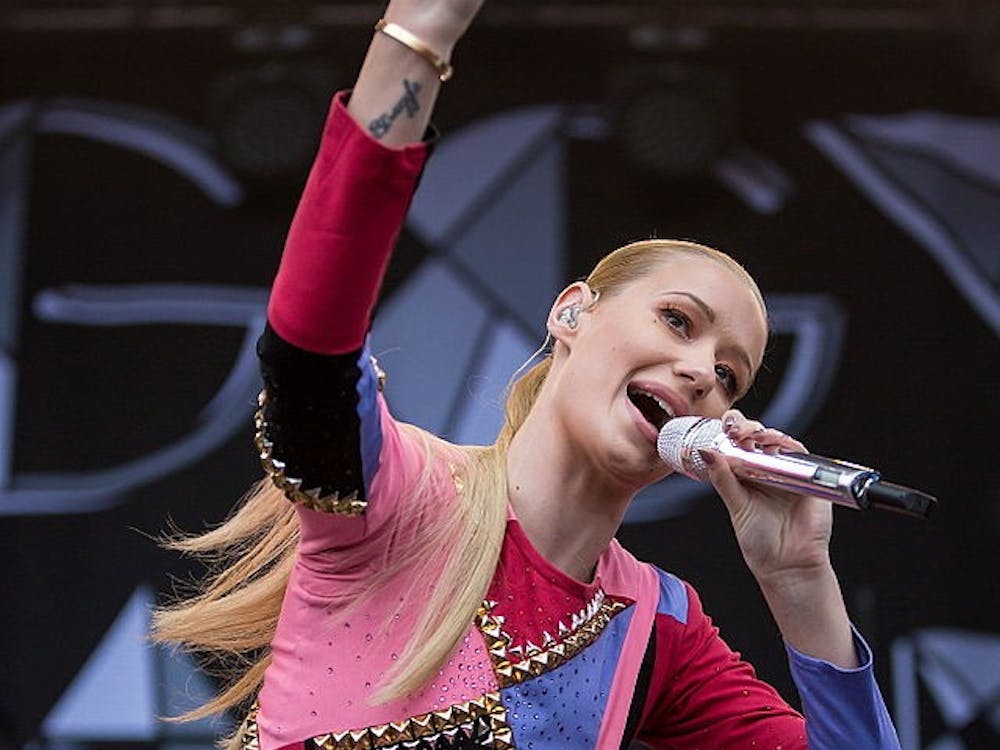Those of us who love dance movies know that they operate under a few unwritten rules. They do not require the most original plot and characters, or the strongest actors. They should make up for it with insight, fresh performances, and of course, lots of beautiful, exciting dancing. The creators of "Center Stage" know this formula well -- and give us exactly what we want.
The film, directed by Nicholas Hytner, takes place at the prestigious American Ballet Academy, where about forty advanced students compete over the course of a year for six slots in the Academy's selective company. Each has obstacles to overcome. There's Jody (Amanda Schull), who dances with passion, but doesn't have perfect technique, or "great feet," in ballet terms. Eva (Zoe Saldana) is graceful and accurate but mouths off regularly to her instructor and even the company's director (Peter Gallagher).
At the end of the year, the students put on a workshop, dance their hearts out, and hope for a chance at fame. Who succeeds, who fails, who gives it all up? There are a few surprises, and a few things we saw coming all along. It's satisfying all the same.
The marketing of "Center Stage" has focused mainly on teen audiences. Thus, advertisements have tended to emphasize the characters' glossy good looks and various romantic entanglements. But this is a film firmly rooted in the world of dance and theatre -- both inside and out.
Director Nicholas Hytner made a name for himself on the West End with the gorgeous and devastating musical "Miss Saigon." Choreographer Susan Stroman is one of the hottest names on Broadway at the moment. Her impressive work in "Show Boat," "Crazy for You" and an original dance play entitled "Contact" has garnered critical acclaim. And although at first glance the cast seems composed of relative unknowns, Sascha Radetsky and Ethan Stiefel, who play Charlie and Cooper, respectively, are two of the best known members of the renowned American Ballet Theatre.
These influences are evident in every aspect of the film, from the detailed depiction of the politics of the performing arts to the numbers themselves. In an early scene, we see the dancers breaking in their pointe shoes in the most bizarre ways -- closing them in doors, burning the toes, ripping out the lining. It's just one of the little details of the dance world the film lets us in on.
Another is inside the minds of the dancers. The central conflict they face is familiar: Should they dance for the critical eyes or for themselves? Should they dance the steps or the emotions? It is not a new idea, and yet it resonates for anyone, dancer or not, who has ever felt passionate about something and struggled to make a life from it.
We instantly are drawn to Jody, who struggles through her technique classes, but charges her performances with raw emotion. She is not the best dancer; she may not even love dancing the most. But she knows how to make the audience feel what she's feeling, and we want desperately for her to succeed. Schull, very natural in this role, delivers her lines with honesty, and dances with breathtaking intensity.
Despite its commitment to portraying the realities of dance, the film also reminds us that these disciplined performers are just teenagers. It's yet another important struggle -- they will only be young enough to dance for the next ten years, but they also will only be young once.
The moments when we see the warm, enthusiastic children inside the rigid, precise dancers are particularly poignant. Because they are teenagers, with vulnerable hearts and raging hormones, the film's romantic elements are natural and welcome.
The tender moments between Jody and her partner Charlie are engaging enough to add layers to their dancing, but subtle enough not to detract from it. Radetsky, in fact, is so warm and charming in these scenes that it is hard to believe he is not a seasoned actor.
Still, the film's most compelling moments are its dance performances -- and that's the way it should be. Stroman's choreography, particularly the ballet that Jody and Charlie dance in the workshop, is imaginative and full of passion.
In an early scene, the students attend a company show, and watch as the two star dancers perform an achingly beautiful pas de deux from "Romeo and Juliet." As the camera pans to the faces of the students, we see wonder, joy, even tears in their faces, all evoked by the spell the performers weave. Good dancing can do that, the film seems to be telling us -- and in this film, it certainly does.
Grade: A-






